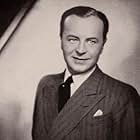Photos
Storyline
Did you know
- TriviaAnother so-called "Überläufer": Shot between 1940 and 1943, this was first released as late as 1953 with additional scenes shot that same year and the year before (1952).
Featured review
This shambles of a film has a more interesting genesis than content. Sensation director and actor Harry Piel made the film "Panik" in the period 1940-1943 that was banned by the Promi: the animals running loose from a zoo after a bombardment reminded in 1943 too much of the real bombardments and in Berlin indeed one day the animals from the zoo were running through the streets. The only copy of the film was later destroyed by a bombardment also, while after the war the negative was confiscated by the Russians.
In 1951/2 Piel was able to reclaim the negative, shot some additional material and edited a new version under a new title. He was not successful as in the 50's the - once huge - interest in Piel's exotic adventures was no more and maybe the Germans did not like to be reminded of the bombardments anyhow; this his 106th film would be his last feature.
It may be that the reconstruction took a heavy toll, but seeing this film (and others by Piel for that matter) one wonders what ever the attraction of Piel's exotic adventures could have been. There is only a very rudimentary script that lacks a solid story; the first 20 minutes or so the events take place in East Africa and here we have some action, after which the story moves to the Zoo in Hamburg (actually the Munich Zoo). From that moment until the bombardment - that is about 60 minutes later! - the film is confined to the zoo and in this part really nothing interesting happens; to fill the time the viewer is bored till death with shots of animals, the zoo and Ruth Eweler. The bombardment and the subsequent rescue of animals have an acceptable excitement level, but it is too late: to pass away the time the viewer is already taking care of his own pets.
The film completely lacks a sense of humour, but Harry Piel was himself know as a man without any (he once sued director Piel Jutzi for his Christian name!). The cinematography is only so-so with some bad moments, the editing is mediocre and without any sense of rhythm, the synchronization is below any normal standard and they did not know how to handle the music. The acting is wooden except for Dorothea Wieck and Hans Zesch-Ballot who both try to make the best of things (an unthankful part). Piel's screen presence is nondescript, but his vanity is present every minute.
In stead of giving the 84.000 meters of negative to Mr. Piel, the Russian should have send the material back to East Africa.
In 1951/2 Piel was able to reclaim the negative, shot some additional material and edited a new version under a new title. He was not successful as in the 50's the - once huge - interest in Piel's exotic adventures was no more and maybe the Germans did not like to be reminded of the bombardments anyhow; this his 106th film would be his last feature.
It may be that the reconstruction took a heavy toll, but seeing this film (and others by Piel for that matter) one wonders what ever the attraction of Piel's exotic adventures could have been. There is only a very rudimentary script that lacks a solid story; the first 20 minutes or so the events take place in East Africa and here we have some action, after which the story moves to the Zoo in Hamburg (actually the Munich Zoo). From that moment until the bombardment - that is about 60 minutes later! - the film is confined to the zoo and in this part really nothing interesting happens; to fill the time the viewer is bored till death with shots of animals, the zoo and Ruth Eweler. The bombardment and the subsequent rescue of animals have an acceptable excitement level, but it is too late: to pass away the time the viewer is already taking care of his own pets.
The film completely lacks a sense of humour, but Harry Piel was himself know as a man without any (he once sued director Piel Jutzi for his Christian name!). The cinematography is only so-so with some bad moments, the editing is mediocre and without any sense of rhythm, the synchronization is below any normal standard and they did not know how to handle the music. The acting is wooden except for Dorothea Wieck and Hans Zesch-Ballot who both try to make the best of things (an unthankful part). Piel's screen presence is nondescript, but his vanity is present every minute.
In stead of giving the 84.000 meters of negative to Mr. Piel, the Russian should have send the material back to East Africa.
Details
- Runtime1 hour 23 minutes
- Color
- Sound mix
- Aspect ratio
- 1.37 : 1
Contribute to this page
Suggest an edit or add missing content










